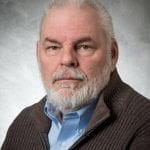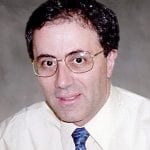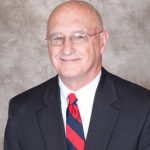Heat Treating, Furnaces, and Unintended Consequences
A few decades ago, my involvement with depleted uranium (DU) began in the metallurgical R&D department, developing program logic to heat treat DU in...
The effect of agitation on oil quenchants
In this column, I will discuss the effect of agitation on the cooling curve of oil quenchants.
Oil has been used for many years as...
Heat treatment of aluminum, Part V
After quenching and any straightening, the supersaturated solid solution of aluminum wants to reach equilibrium. It does this through the process of precipitation hardening....
Revisiting the 1:1 Rule for oil quenchants
The rule of thumb “one gallon of oil to one pound of parts and fixtures” has been in the literature for a long time....
Troubleshooting induction hardening problems: Part 2
Last month, I began a two-part article about troubleshooting induction hardening problems and discussed possible corrections. This month, I will discuss biological and odor...
Troubleshooting induction hardening problems: Part 1
Induction hardening is a unique method used to harden steels. The process uses a power supply, RF generator, induction coil, and quenching mechanism (spray...
Blistering of aluminum during heat treatment
In this column, we will discuss the blistering of aluminum during heat treatment, and methods to prevent its occurrence.
Introduction
High-temperature oxidation, or blistering, often occurs...
Troubleshooting induction hardening problems – Part III
In previous columns, I have provided some detail on the sources of problems with induction hardening. While I have tried to be inclusive, there...
Hardening power: A measure of quenching performance
In this column, we will discuss the Segerberg Hardening Power (HP) for polymer quenchants.
When comparing polymer quenchants, there are several things that we look...
Sampling of quench oil for proactive maintenance
In this column, I will discuss the sampling of quench oil for quarterly checks as required by many internal and external auditing agencies (CQI-9,...
Carbon: Essential element or too much of a good thing
52100: Simple, yet it embraces carbon’s two-way benefit to steel
Understanding the basics of spray quenching
Spray quenching involves the removal of heat by the impingement of a liquid quenchant on a hot metal surface. Examples include:
Fog quenching.
Quenching...
Polymer quenchants and corrosion of aluminum
When slow quenching 2024 aluminum, this alloy is susceptible to intergranular corrosion. Two common quenchants, water and AMS 3025 PAG type quenchants, are compared.
Introduction
Heat...
Developing a superalloy with superior heat resistance
Demand for superior machinery that can operate effectively under extreme conditions is driving the development of newer alloys. One significant example is the preparation...
Anatomy of a Heat-Treating System
Ninety-eight 600-pound trays are in continuous process, 13 are in the pre-process queue, nine preheating, 14 in the boost carb, eight in the diffusion...
Heat-treating workhorse – integral quench furnace
In this column, we will discuss the workhorse of the steel heat-treating industry – the integral quench furnace.
The integral quench furnace, or sealed quench...
Let’s hear it for welding
Heat-treating and metallurgy are topics that attract the overwhelming interest of attendees of technical conferences and are written about in numerous articles. However, a...
Intensive Quenching Calls For Very High Cooling Rates Part 2
Intensive quenching (IQ) is defined as cooling, usually using pure water, at a rate several times higher than the rate of conventional quenching. Fast,...
Quench factor analysis: quench factor determination
In this column, we will discuss the determination of the quench factor as it is used in quench factor analysis. This will lead into...
Heat treatment of aluminum – Part I: Quenching basics
In previous articles, we discussed the role of alloying elements and discussed the solution heat treatment of aluminum. We showed that it is important...
Quenching from molten salt into polymer quenchants
In this column, I will discuss quenching aluminum from molten salt into a polymer quenchant.
A molten salt bath is a common method of heating...
The effect of temperature on cooling curve behavior
In this column, we will discuss the effect of temperature on the cooling curve behavior of quench oils.
Development of Quench Oil Maximum Operating Temperature
The...
Heat treatment of aluminum IV: Handling distortion
After quenching, depending on the quenchant used, distortion of parts can occur. This is particularly true for water-quenched parts. Parts must be straightened. This...
Control of distortion in heat-treated aluminum
In this column, we will discuss controlling the distortion of aluminum heat-treated components.
The heat treatment of aluminum (solution heat treatment, quenching and aging) are...
Use of molten salts for martempering of steel
In July’s column, I talked about molten salts and the different types. In this short column, we discuss the benefits of using molten salts...
Heat treatment of aluminum VI – Artificial aging
In the previous column, we described the fundamentals of natural aging. In natural aging, the solid solution obtained after quenching starts to form precipitates...
The heat treatment of aluminum – Introduction
Aluminum’s many desirable properties, such as high strength-to-weight ratio, good corrosion resistance, ease of processing, and low cost, make it a very widely used...
Compatibility of polymer quenchants with metals, seals
In this column, I will discuss the compatibility of polymer quenchants and materials used in the construction of quench tanks, heat exchangers, and pump...
Calculating decarburization
In this column, I will be talking about decarburization of steel and how to calculate its depth.
Introduction
Decarburization of steel is the depletion of carbon...
Process control is vital to heat-treating
The definition of process control can only be defined by the experience of the per-son to whom the query is presented. Everyone involved in...
Estimating required flow through quench tanks
In this month’s column, I will discuss a method of estimating the required flow for a quench tank.
Agitation has a significant effect on...
Some things old can be new again
Why heat-treating furnaces look the way they do
Finding data needed for modeling and simulation
Modeling and simulation have become an important part of the design and manufacturing toolbox. Modeling and simulation are used in forging, casting, machining, forming,...
Intergranular oxidation in carburizing steels
Intergranular oxidation (IGO) in carburizing steels is detrimental to carburized gear performance. It reduces fatigue performance and can contribute to surface spalling. This article...
Furnace Doors
No matter the configuration, single or multi-chamber vacuum, batch integral quench, continuous, or even pits — an item that all furnaces have in common...
Meeting Automotive Efficiency Standards
For automobiles where competing hardening processes and materials are involved, automotive designers and heat treaters have choices when deciding how to meet efficiency standards.
There...
Heat treatment of aluminum – Part II
In my article last month, I discussed the alloying elements used in aluminum alloys. In this article, I will be discussing the solution heat...
The metallurgical R&D laboratory
Remembering old-school lab work is a blast from the past
Heating with natural gas
It’s no secret that the heat treating industry is one of the major recipients of the impact when the U.S. Environmental Protection Agency (EPA)...
Safety considerations when quenching with oil or salt
In this column, we will consider safety aspects of quenching with oil or molten salt.
Heat treating is a manufacturing process where the goal is...




























